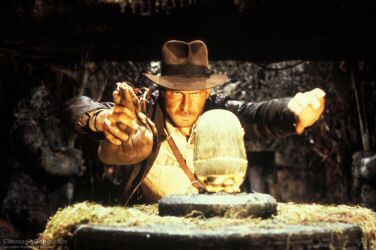During the relatively socially liberal 1920s and early 30s,
Hollywood was increasingly seen as a breeding ground for immorality.
Films frequently included such conservative vices as sexual innuendos, references to homosexuality, miscegenation, illegal drug use, infidelity, abortion and profane language. This reputation was made worse by stories of decadent dope parties, which were connected to the fall of silent film stars like
William Desmond Taylor and
Fatty Arbuckle.
The Motion Picture Producers and Distributors of America (later renamed to today's
MPAA) didn't yet have the clout to enforce censorship. That is, until Will Hays got into his stride.
In October of 1927,
Will Hays published a set of censorship guidelines split into things that must never be portrayed on film, and things that required "special care". The Hays Code, which became known in the industry as the Don'ts and Be Carefuls, formed the basis of the guidelines that governed the production of almost all USA motion pictures until 1968, when age-related ratings were introduced.
Below, unadulterated apart from the comments in [square brackets], is the complete original list of Don'ts and Be Carefuls. How times have changed.
Don'ts1. Pointed profanity - by either title or lip - this includes words "God," "Lord," "Jesus," "Christ" (unless used reverently in connection with proper religious ceremonies), "hell," "damn," "Gawd," and every other profane and vulgar expression, however it may be spelled. [Hence why
Clark Gable's famous line in
Gone with the Wind was so controversial. Frankly my dear, I think you should see
The Aristocrats.]
2. Any licentious or suggestive nudity — in fact or in silhouette; and any lecherous or licentious notice thereof by other characters in the picture. [In silhouette?!]
3. The illegal traffic in drugs. [An odd choice for the one of the few crimes in the Don'ts.]
4. Any inference of sex perversion. [In other words, except for a man kissing a woman (who he's married to) on the cheek, don't show anything.]
5. White slavery. [Why is this at number five? Would portraying it encourage it? Or would it offend the white slavers?]
6. Miscegenation (sex relationships between white and black race). [The same people who supported rules like this have moved on to hating gays and barring them from getting married. And they'll look just as foolish when the history books are written.]
7. Sex hygiene and venereal diseases. [Would that get portrayed a lot if it wasn't banned, do you think?]
8. Scenes of actual childbirth - in fact or in silhouette. [Fake childbirth ok then. Storks.]
9. Children’s sex organs. [Like, babies?]
10. Ridicule of the clergy. [Does the pope shit in the woods?]
11. Willful offense to any nation, race or creed. [Isn't number 6 itself a willful offence to race?]
Be Carefuls1. The use of the flag.
2. International relations (avoiding picturization in an unfavorable light another country’s religion, history, institutions, prominent people, and citizenry).
3. Arson.
4. The use of firearms.
5. Theft, robbery, safecracking, and dynamiting of trains, mines, buildings, etc. (having in mind the effect which a too-detailed description of these may have upon the moron). [The moron! Ha!]
6. Brutality and possible gruesomeness.
7. Technique of committing murder by whatever method.
8. Methods of smuggling.
9. Third-degree methods. [ie torture]
10. Actual hangings or electrocutions as legal punishment for crime. [Perhaps if you're ashamed about showing it, you shouldn't do it...]
11. Sympathy for criminals.
12. Attitude toward public characters and institutions.
13. Sedition.
14. Apparent cruelty to children and animals.
15. Branding of people or animals.
16. The sale of women, or of a woman selling her virtue.
17. Rape or attempted rape.
18. First-night scenes. [Eh?]
19. Man and woman in bed together.
20. Deliberate seduction of girls.
21. The institution of marriage.
22. Surgical operations.
23. The use of drugs.
24. Titles or scenes having to do with law enforcement or law-enforcing officers.
25. Excessive or lustful kissing, particularly when one character or the other is a "heavy." [A what?!]
Of course, these days the list would be very different:
Don'ts-
Be Carefuls1.
Two girls, one cup.


 Return of the Jedi is the best of the three, in my opinion.
Return of the Jedi is the best of the three, in my opinion.








